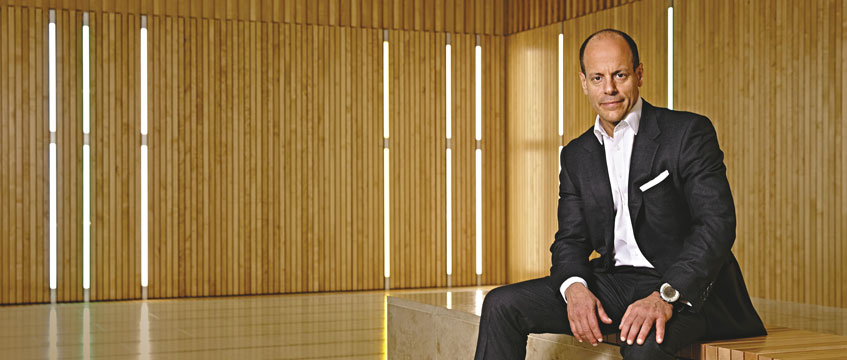The TMT sector has been causing something of a stir in London property circles. Why? It is not as if the component parts of technology, media and telecoms are brand new, as the term has been common currency for a couple of decades.
Much of the fuss stems from the first “T” in the equation: technology. The rapid evolution of digital services in recent years, including the introduction of cloud computing, has had a profound effect on how both businesses and consumers operate. This has led to growth spurts in existing companies that have had the foresight and ability to embrace the new technologies as well as the creation of completely new businesses.
As a result, take-up in central London by TMT tenants has surged. According to CBRE, the sector accounted for nearly 20% (around 1.8m sq ft) of total space taken during 2011, and the property consultancy says that TMT firms now dominate demand for future space (see table).
“The key demand factors for these companies are pricing, image and accessibility,” says Simon Calvert, senior director of CBRE’s tenant advisory group. The latter seems to be instrumental in the capital’s ability to gain an increasing hold on businesses that previously would have been regarded as ideal candidates for out-of-town office campuses.
Nokia’s announcement at the beginning of this year that it was abandoning north Hampshire for Paddington (see below) has prompted speculation that it could mark the start of a trend for hi-tech companies to decamp from the M4 into central London. Calvert thinks not: “There won’t be a headlong rush out of the Thames Valley, but Nokia’s move isn’t a flash in the pan. Similar relocations will happen.”
Pinning down who is likely to move is harder, though a scan of requirements reveals that most are already based in or around central London and that many of the largest are from relatively well-established firms. In fact, this is part of the TMT paradox.
“The sector includes such a wide variety of companies that to talk about it in a single sweeping definition isn’t really possible. We need to differentiate between businesses operating mainly online and those that produce tangible, hardware-type outputs,” says Knight Frank research partner Patrick Scanlon.
The type of staff a business attracts will also influence where it will take space, although the current squeeze on grade A space in central London is increasingly likely to influence where deals are done.
Property professionals seem to agree that younger companies are happy to challenge conventions about where they need to be and what kind of space they want. They point to discount website operator GroupOn’s decision last year to take 52,000 sq ft of managed space at Seal House near London Bridge as a good example. The City fringes, including Aldgate and Whitechapel, are tipped as areas that are likely to attract web-based B2C (business to consumer) businesses.
Whether this will have a significant effect on traditional TMT locations (at present West End and City still account for half the amount occupied by the sector) remains to be seen. “TMT only accounts for 7% of total employment in central London,” says Savills associate Guy Sheppard.
Nevertheless, according to Drivers Jonas Deloitte, the sector is already punching above its employment weight, occupying 13% of the capital’s office stock – around 25m sq ft. Chris Lewis, head of TMT real estate at DJD, says: “The challenge for the real estate sector is to recognise, and then respond to, the often complex and flexible needs of TMT businesses.”
Selected TMT office requirements (50,000 sq ft-plus)
• LinkedIn (60,000 sq ft)
• Saatchi & Saatchi (148,000 sq ft)
• Skype (50,000 sq ft)
• Reed Elsevier (100,000 sq ft)
• Sony (100,000 sq ft)
• Apple (75,000-150,000 sq ft)
• Wonga.com (50,000 sq ft)
• Time Warner (100,000 sq ft)
• Google (375,000 sq ft)
• IBM (200,000 sq ft)
• Publicis (88,000 sq ft)
• Weber Shandwick (65,000 sq ft)
• Ogilvy & Mather (150,000 sq ft)
• BBC (125,000 sq ft)
• Creston (50,000-70,000 sq ft)
Source: Estates Gazette, collated from various agents
Selected TMT office requirements (below 50,000 sq ft)
• Experian (20,000 sq ft)
• Mimecast (25,000 sq ft)
• The Mill (40,000 sq ft)
• Salesforce (40,000 sq ft)
• Monetise (20,000 sq ft)
• Saffron Digital (25,000 sq ft)
• Pushbutton (25,000 sq ft)
Source: Estates Gazette, collated from various agents
It’s for you: why Nokia went to Paddington
This August, global telecoms company Nokia will move from its 250,000 sq ft UK HQ in Farnborough, Hampshire, to a new, 58,000 sq ft, international hub in Paddington, where it will rub shoulders with network providers Orange and Vodafone. Changes in the telecoms sector led the mobile phone manufacturer to shed jobs and move away from its heavily R&D-orientated roots, which in turn dictated the type of space required.
Simon Francis, Nokia’s workspace resources manager for Western and Southern Europe, says: “We wanted to try to improve communications within the organisation – that meant big, light, airy floorplates of around 23,000 sq ft.”
But when Francis, together with property adviser CBRE, started to search last spring they found surprisingly few buildings that met all their requirements. He says: “We drew a line between Farnborough and central London and considered every opportunity within that bubble; around 60 buildings in total. Some were interesting buildings, others were in great locations, but most either didn’t have good transport links or weren’t ideal for staff retention.”
The search included out-of-town locations such as Stockley Park and Weybridge, as well as up-and-coming areas like east London’s Silicon Hub, which was ruled out partly because of concerns about how quickly the location would reach a critical occupational mass and the limited amount of stock currently available, and partly because of the additional travel time needed to cross London for existing employees.
“It is really important that we retain our key talent,” says Francis, “and eventually we realised that the best location between Farnborough and London was London itself, somewhere that has relatively easy access for all staff and good connections with Heathrow.”
Although Nokia considered buildings across central London, it ruled out properties in more traditional locations on cost grounds. “We wanted a compelling grade A building without breaking the bank,” says Francis.
Indeed, the rent eventually agreed by Nokia was significantly lower than quoting rents in the nearby West End.
Having homed in on Paddington, the telecoms giant was in the happy position of a choice of two buildings: European Land & Property’s 262,000 sq ft 5 Merchant Square and the 250,000 sq ft 2 Kingdom Street, part of Development Securities’ and Aviva’s Paddington Central scheme.
The best financial package appears to have cemented the deal at the latter, although the ability to take part of the ground floor as a self-contained unit was also a clincher. Nokia’s space is designed for up to 550 employees and although expansion is not currently a consideration for the firm, further space is available nearby, should it be required in future.
NOKIA DEAL DETAILS
Space taken: 58,500 sq ft; floors 4, 5 and part of ground
Property: 2 Kingdom Street, W2
Landlord: Development Securities and Aviva
Initial rent: £57.50 per sq ft
Lease length: 15 years
Break: Year 1
Down with the kids: the changing face of TMT employees
Like it or not, large sections of the TMT world, particularly those linked to new technology, are a young person’s game. The average age of a Google employee is 31 and at Facebook it is 26.
For technology and telecoms firms, the employee mix is changing. Dan Bayley, central London managing director at BNP Paribas Real Estate, says: “Not long ago a typical employee profile was a British man or woman, driving a Mondeo, living in a Barratt starter home, driving to an out-of-town office in the Thames Valley.
“Now it is more likely to be a global business person, to whom a Barratt home is complete anathema. They commute on a bicycle.”











